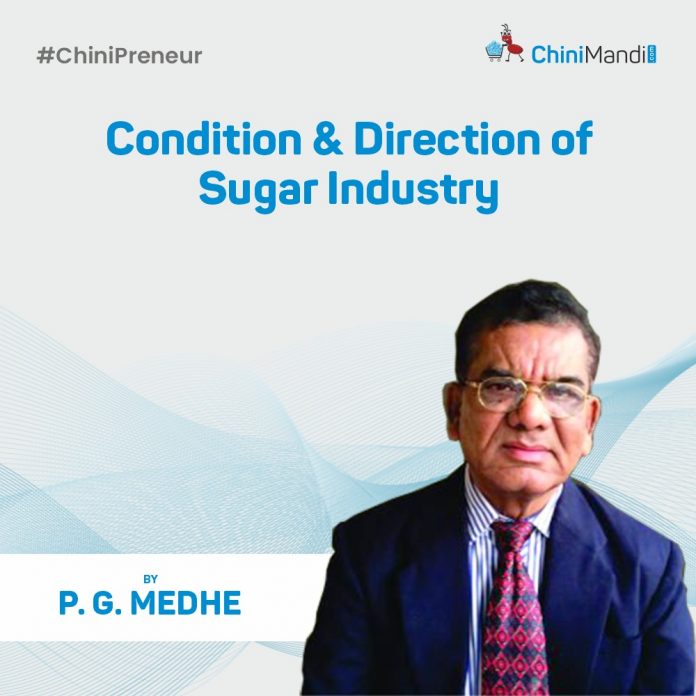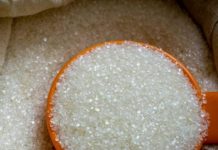The Indian sugar industry is the second-largest globally, contributing significantly to rural Socio-Economic Development, employment and GDP. Despite its importance, the sector faces persistent challenges such as price fluctuations, delayed farmer payments, climate-related risks, and government policy changes. A well-structured stakeholder management strategy can address these challenges and ensure a stable and thriving industry.
This article examines the key stakeholders in the Indian sugar sector, their roles, and strategies to create a win-win situation for all, ensuring long-term success.
STRATEGIES FOR KEY STAKEHOLDERS:
A) STRENGTHENING FARMER RELATIONS:
Strengthening farmer relations is crucial for the sustainability of the sugar industry. Here are some key strategies:
1. Fair Pricing and Timely Payments
Ensure transparent and competitive pricing for sugarcane.
Implement prompt and efficient payment mechanisms to support farmers’ cash flow.
2. Technical and Financial Support
Provide training on modern farming techniques, irrigation, and pest control.
Facilitate access to credit and subsidies for farm inputs like fertilizers and seeds.
3. Strengthening Supply Chain and Logistics
Improve transportation and storage facilities to reduce post-harvest losses.
Establish collection centers closer to farms for easier cane delivery.
4. Long-Term Contracts and Incentives
Offer long-term contracts to provide farmers with security and confidence.
Introduce bonus systems for quality and timely supply of sugarcane.
5. Sustainable Farming Practices
Promote crop rotation, organic fertilizers, and water conservation techniques.
Encourage integrated pest management to reduce chemical dependency.
6. Digital and Technological Integration
Use mobile apps and digital platforms for price updates, weather forecasts, and advisory services.
Implement blockchain for transparent transactions and supply chain tracking.
7. Cooperative and Farmer Organization Support
Strengthen farmer cooperatives to improve bargaining power.
Facilitate partnerships between farmers, mills, and research institutions.
8. Social and Community Development
Invest in rural infrastructure, healthcare, and education to enhance farmer well-being.
Engage in CSR activities that benefit farming communities.
9. Research and Development (R&D)
Support R&D in high-yield and disease-resistant sugarcane varieties.
Work with agricultural universities and research centers for knowledge transfer.
10. Government and Policy Advocacy
Collaborate with policymakers to ensure farmer-friendly regulations.
Advocate for subsidies, minimum support prices, and incentives for sustainable farming.
By fostering strong relationships with farmers through these strategies, the sugar industry can ensure a stable and sustainable supply of raw materials while enhancing farmer livelihoods.
B) STRATEGIES FOR SUGAR FACTORIES:
Sustainability in sugar factories involves optimising resources, reducing waste, and minimising environmental impact while ensuring economic viability. Here are key strategies…..
1) Energy Efficiency & Renewable Energy:
Sugar factories have significant potential for renewable energy integration, primarily through biomass, cogeneration, solar, and biofuels. Here’s how these can be effectively implemented:
a) Cogeneration Using Bagasse
Cogeneration (Combined Heat and Power, CHP) is the process of using bagasse (sugarcane residue) to generate both electricity and steam for the factory’s operations.
Benefits:
Energy Efficiency:
Utilises waste heat, improving overall efficiency up to 80%.
Cost Savings:
Reduces reliance on grid electricity and fossil fuels.
Revenue Generation:
Excess power can be sold to the grid.
Reduced Carbon Footprint: Lowers emissions by using renewable biomass.
Implementation Strategy:
Upgrade to high-pressure boilers (60-120 bar) for better efficiency.
Install back-pressure or extraction-condensing turbines for optimized steam and electricity use.
Improve bagasse drying and storage to increase calorific value.
Integrate with biogas from vinasse for additional energy production.
b) Solar Energy Utilization
Solar power can complement energy needs, especially for auxiliary operations like lighting, water pumping, and even process heating.
Benefits:
Lowers Grid Dependency:
Reduces energy costs in non-harvest seasons.
Scalable:
Can be installed on rooftops or open land areas.
Minimal Maintenance:
Long lifespan with low operational costs.
Implementation Strategy:
Install rooftop solar panels on factory buildings and warehouses.
Use solar thermal systems for preheating boiler feed water to reduce fuel consumption.
Set up solar microgrids to power irrigation systems for sugarcane farms.
c) Bioethanol & Biogas Production
Bioethanol from Molasses
Bioethanol is produced from sugarcane molasses and can be blended with petrol (e.g., E10 or E20 ethanol blending mandates in many countries).
Benefits:
Alternative Revenue Stream:Adds value to molasses waste.
Supports Government Policies:
Many countries mandate ethanol blending in fuel.
Reduces Pollution:
Burns cleaner than fossil fuels.
Implementation Strategy:
Invest in ethanol distilleries integrated with sugar mills.
Upgrade to second-generation (2G) ethanol from bagasse and agricultural waste.
Partner with fuel companies for ethanol supply agreements.
Biogas from Vinasse & Press Mud
Biogas can be produced from vinasse (ethanol waste) and press mud, providing an additional energy source.
Benefits:
Reduces Waste Disposal Issues:
Converts waste into a useful product.
Provides Renewable Energy:
Can be used for boilers or power generation.
Improves Soil Health:
Digestate from biogas plants can be used as organic fertilizer.
Implementation Strategy:
Install anaerobic digesters to process vinasse and press mud.
Use captured methane for boilers or power generation.
Optimise vinasse treatment to meet environmental regulations.
d) Wind Energy (Optional for Large-Scale Factories)
For large sugar factories with available land, wind turbines can provide a reliable source of renewable power.
Implementation Strategy:
Conduct wind potential assessment for feasibility.
Install small or medium-sized wind turbines on factory premises.
Integrate with the grid or battery storage for continuous power supply.
e) Smart Energy Management & Digitalisation
Implement IoT-based energy monitoring systems to track real-time power usage.
Use AI-driven predictive maintenance to optimize cogeneration plant efficiency.
Integrate blockchain for carbon credit trading and renewable energy certification.
By integrating cogeneration, solar, bioethanol, and biogas, sugar factories can become self-sufficient in energy, reduce operational costs, and contribute to environmental sustainability.m
C) STRATEGIES FOR GOVERNMENT & REGULATORS:
The sustainability of the sugar industry depends on a combination of economic, environmental, and social factors. Governments and regulators play a crucial role in ensuring long-term viability through policies and regulations. Here are key strategies they can adopt:
1. Policy and Regulatory Support
Stable Pricing Policies:
Implement price stabilization mechanisms to protect farmers and millers from market volatility.
Minimum Support Price (MSP):
Ensure fair pricing for sugarcane to maintain farmer interest.
Export and Import Policies:
Develop flexible trade policies that balance domestic demand and global competitiveness.
Subsidies & Incentives:
Provide targeted subsidies for sustainable farming, technology adoption, and ethanol production.
2. Diversification and Value Addition
Ethanol Blending Programs:
Encourage ethanol production from sugarcane to reduce dependence on fossil fuels.
Byproduct Utilization:
Promote value-added products like biofuels, organic fertilizers, and power generation from bagasse.
Research & Development:
Invest in R&D for new sugarcane varieties, disease resistance, and sustainable processing technologies.
3. Water and Environmental Management
Efficient Water Use:
Promote drip irrigation and other water-efficient farming techniques.
Waste Management Regulations:
Enforce proper disposal of effluents and encourage circular economy practices.
Carbon Footprint Reduction:
Incentivise mills to use renewable energy sources like bagasse-based cogeneration.
Sustainable Farming Practices:
Support crop rotation, organic farming, and soil health improvement.
4. Financial and Institutional Support
Soft Loans and Credit Facilities:
Provide low-interest credit to farmers and millers for modernization.
Public-Private Partnerships (PPPs):
Encourage private sector involvement in research, technology adoption, and infrastructure.
Risk Management Mechanisms:
Develop insurance schemes to protect farmers against crop failure and market fluctuations.
5. Digitalization and Data-Driven Policies
Smart Agriculture:
Promote digital tools for weather forecasting, pest management, and precision farming.
Supply Chain Optimization:
Use blockchain and AI for transparent and efficient logistics and pricing.
Real-Time Monitoring:
Implement systems to track production, exports, and environmental compliance.
6. Social and Labor Welfare Policies
Fair Wages and Working Conditions:
Enforce labor laws to ensure fair wages and safe working environments.
Capacity Building:
Train farmers and workers on sustainable practices and new technologies.
Women and Youth Inclusion:
Support initiatives for greater participation of women and youth in the sugar industry.
7. Climate Adaptation and Resilience
Drought-Resistant Crops:
Encourage research in drought-tolerant sugarcane varieties.
Disaster Preparedness:
Develop contingency plans for climate-related disruptions.
Afforestation and Carbon Credits:
Promote tree planting and explore carbon credit programs for sustainability.
8) Promotion of Consolidated Farming at the Village Level –
Encourage and implement policies that promote consolidated or cooperative farming at the village level to enhance land productivity. Given the decreasing per capita landholding due to the division of joint families, consolidated farming can help optimize resource utilization, improve mechanization, and increase productivity from 80 MTs to 150 MTs per hectare. This approach can be supported through incentives, soft fund availability , infrastructure development, and farmer cooperatives to ensure sustainable agricultural growth.
By implementing these strategies, governments and regulators can insure that the sugar industry remains competitive, environmentally responsible and beneficial to all stakeholders.
D) STRATEGIES FOR INSURING CONSUMER & MARKET SATISFACTION:
Ensuring consumer and market satisfaction is essential for the sustainability of the sugar industry. Here are some key strategies:
1. Product Quality and Safety
Implement strict quality control measures to ensure high-quality sugar products.
Adopt food safety standards such as HACCP and ISO 22000.
Offer different sugar variants (organic, brown, refined, low-GI) to cater to diverse consumer needs.
2. Sustainable Production Practices
Invest in sustainable farming practices (e.g., drip irrigation, crop rotation) to reduce environmental impact.
Promote eco-friendly processing methods that minimize waste and energy consumption.
Support fair trade and ethical sourcing of sugarcane to meet consumer expectations for sustainability.
3. Market Responsiveness and Innovation
Develop healthier sugar alternatives such as low-calorie sweeteners or natural sugar blends.
Explore new product formulations to align with health-conscious consumer trends.
Continuously monitor market trends and adjust production accordingly.
4. Competitive Pricing and Supply Chain Efficiency
Optimise production and logistics to ensure stable supply and competitive pricing.
Diversify revenue streams by producing by-products such as ethanol, biofuels, and bagasse-based energy.
Strengthen relationships with suppliers and distributors for smooth market operations.
5. Consumer Engagement and Transparency
Educate consumers on sugar consumption and health implications.
Clearly label products with nutritional information and sustainability certifications.
Use digital marketing and social media to engage consumers and build brand trust.
6. Policy and Regulatory Compliance
Align with government policies on sugar pricing, exports, and sustainability goals.
Participate in industry associations and sustainability initiatives.
Advocate for policies that support a fair and competitive sugar market.
By integrating these strategies, the sugar industry can enhance consumer satisfaction, maintain market stability, and ensure long-term sustainability.
E) STRATEGIES FOR ENDURING FINANCIAL STABILITY & INVESTORS CONFIDENCE:
Ensuring financial stability and investors confidence in the sugar industry requires a strategic approach that balances operational efficiency, market competitiveness, and sustainability. Here are key strategies:
1. Strengthening Financial Stability
i) Cost Optimization
Efficient production processes:
Invest in modern equipment and technology to reduce energy and production costs.
Supply chain efficiency:
Optimise logistics and transportation to reduce wastage and expenses.
Diversification:
Develop by-products like ethanol, bioenergy, and organic fertilizers to create additional revenue streams.
ii) Financial Management
Debt restructuring:
If heavily indebted, consider refinancing or government-backed support programs.
Improved credit access:
Engage financial institutions for long-term, low-interest financing options.
Working capital management:
Maintain adequate cash flow by ensuring timely payments and managing receivables efficiently.
iii) Market Expansion & Revenue Growth
Export markets:
Tap into international markets to reduce reliance on domestic demand.
Value addition:
Invest in refined sugar, specialty sugar, or sugar-based products to increase profit margins.
Strategic partnerships:
Collaborate with food and beverage industries to secure long-term supply contracts.
2. Boosting Investor Confidence
i) Transparency & Governance
Regular financial reporting:
Publish audited financial reports to assure investors of financial health.
Corporate governance: Strengthen board oversight and management accountability.
Regulatory compliance: Ensure compliance with tax, labor, and environmental laws.
ii) Sustainability & ESG (Environmental, Social, Governance) Practices
Green production:
Invest in renewable energy like bagasse-based cogeneration to reduce environmental impact.
Sustainable farming:
Promote responsible land use, water conservation, and climate-resilient sugarcane farming.
Social responsibility:
Support farmers through fair pricing, training, and welfare programs.
iii) Investor Relations & Confidence Building
Clear investment policies:
Define incentives for investors, such as tax breaks or profit-sharing models.
Stakeholder engagement:
Maintain open communication with investors, government agencies, and industry bodies.
Risk management:
Implement strong risk mitigation strategies for fluctuating sugar prices and climate risks.
3. Government & Policy Support
Subsidies & incentives:
Lobby for financial aid, tax breaks, or low-interest loans for struggling sugar mills.
Trade policies:
Advocate for import controls to protect local producers from cheap foreign sugar.
Research & development:
Partner with research institutions to improve sugarcane varieties and production methods.
By adopting these strategies, the sugar industry can achieve financial stability, enhance investor confidence, and ensure long-term sustainability.
F) STRATEGIES FOR ENVIRONMENTAL & SOCIAL GROUP:
Sustainability in the sugar industry requires addressing both environmental and social challenges. Here are key strategies an environmental and social group can implement to promote sustainability:
ENVIRONMENTAL STRATEGIES:
Sustainable Agriculture Practices
Promote drip irrigation and rainwater harvesting to reduce water usage.
Encourage crop rotation and organic fertilizers to maintain soil health.
Advocate for precision farming to optimize resource use.
Reducing Pollution & Waste
Implement zero-waste policies (e.g., converting bagasse into bioenergy).
Improve effluent treatment plants to prevent water pollution.
Reduce air pollution by promoting cleaner-burning fuel alternatives in sugar mills.
Energy Efficiency & Renewable Energy
Encourage sugar mills to use bagasse-based cogeneration for power.
Advocate for solar or wind energy adoption in sugar production.
Biodiversity Conservation
Promote agroforestry and planting trees around sugar farms.
Reduce pesticide and herbicide use to protect local ecosystems.
SOCIAL STRATEGIES:
Fair Labor Practices
Ensure fair wages and safe working conditions for sugarcane farmers and mill workers.
Advocate against child labor and exploitative labor practices.
Community Development
Support education & training programs for farmers on sustainable practices.
Invest in healthcare & sanitation facilities in sugar-producing communities.
Stakeholder Engagement & Policy Advocacy
Work with governments to promote sustainable sugar policies & regulations.
Collaborate with consumers and businesses to create ethical supply chains.
Consumer Awareness & Market Incentives
Promote eco-friendly certifications (e.g., Bonsucro, Fair Trade).
Encourage consumers to choose sustainably produced sugar.
By combining these environmental and social strategies, an environmental & social group can help the sugar industry transition towards long-term sustainability.
CONCLUSION:
The Indian sugar industry can ensure long-term sustainability and profitability through robust stakeholder management. By fostering collaboration, addressing grievances proactively, and investing in modernization, the industry can mitigate risks and create a thriving ecosystem. A holistic approach to managing farmers, mills, policymakers, consumers, and investors will not only safeguard the industry’s future but also contribute to India’s broader economic growth.
By prioritizing strategic stakeholder engagement, the Indian sugar industry can transition from crisis-driven operations to a stable, resilient, and globally competitive sector.
P.G. Medhe is the former Managing Director of Shri Chhatrapati Rajaram Sahakari Sakhar Karkhana Ltd and sugar industry analyst. He can be contacted at +91 9822329898.












